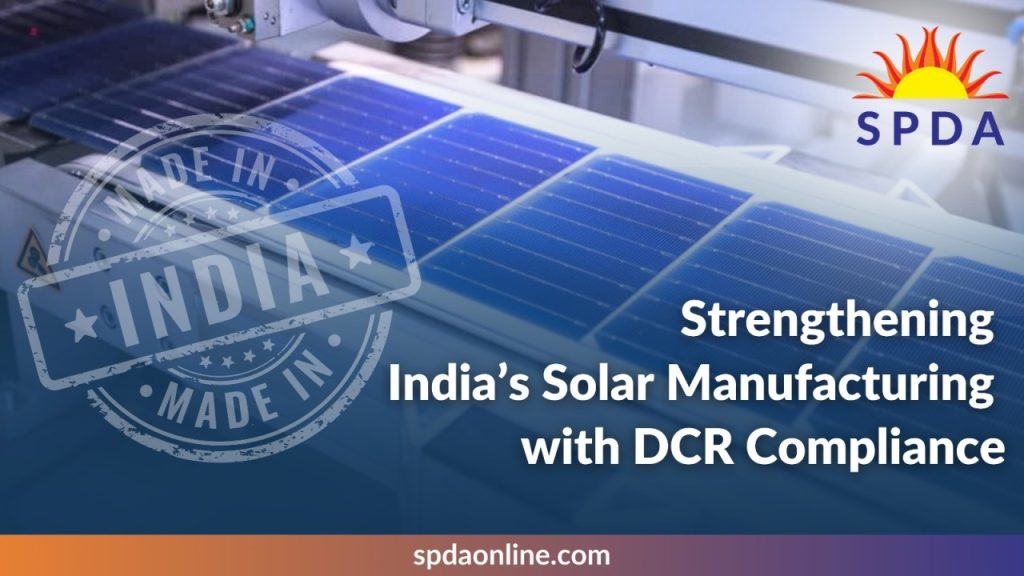The Indian government has taken a significant step to strengthen the Domestic Content Requirement (DCR) policy by banning the import of pre-coated blue wafers. This notification ensures that only genuine DCR-compliant solar cells are used in eligible projects, thereby preventing circumvention of DCR rules and promoting true domestic manufacturing.
Key Takeaways from the New Notification
- Blue Wafer Imports Restricted: Only uncoated silicon wafers (non-blue) can be imported for DCR cell manufacturing.
- Preventing Misuse: Some manufacturers were importing pre-coated (blue) wafers, performing minimal processing (such as cell printing), and falsely qualifying them as DCR-compliant cells. This notification stops that loophole.
- Strengthening Local Manufacturing: Genuine DCR-compliant solar cells must now be fully processed in India, reinforcing India’s self-reliance in solar manufacturing
This is a positive step toward promoting true domestic manufacturing and preventing circumvention of DCR rules.
Understanding the Difference: Wafer-to-Cell vs. Blue Wafer-to-Cell Manufacturing
Difference Between Wafer-to-Cell Manufacturing vs. Blue Wafer-to-Cell Manufacturing
The key difference between Wafer-to-Cell and Blue Wafer-to-Cell manufacturing lies in the processing steps and the level of value addition done in India.
1. Wafer-to-Cell Manufacturing (Genuine Solar Cell Manufacturing Process)
🔹 Starting Material:
- Raw silicon wafer (usually monocrystalline or multicrystalline)
- Typically grey or shiny silver in color
🔹 Manufacturing Process:
- Texturing: Wafers are chemically etched to create a rough surface for better light absorption.
- Diffusion: A high-temperature process introduces dopants (phosphorus for n-type and boron for p-type) to form the PN junction—the core of a solar cell.
- Edge Isolation: Unwanted conductive paths are removed to prevent current leakage.
- Anti-Reflective Coating (ARC): A silicon nitride (Si₃N₄) layer is deposited, making the wafer appear blue and reducing light reflection.
- Metallization & Firing: Metal contacts (silver/aluminum) are printed and fired to create the electrical connections.
- Testing & Sorting: The final cells are tested for efficiency and performance.
Genuine solar cell manufacturing includes all the above steps and adds significant value locally.
2. Blue Wafer-to-Cell Manufacturing (Minimal Value Addition, Misuse of DCR Policy)
🔹 Starting Material:
- Pre-treated blue wafer (already has diffusion, edge isolation, and ARC coating done abroad)
- Imported under the category of “wafer” but is essentially a semi-processed solar cell
🔹 Manufacturing Process (Limited Steps):
- Metallization & Firing: The only major step done in India is screen-printing the silver/aluminum contacts.
- Testing & Sorting: Cells are tested and categorized based on efficiency
⚠️ Minimal processing is done in India, allowing manufacturers to falsely claim “Made in India” under DCR rules.

Why the New Notification Matters?
🚫 By banning the import of blue wafers, the government ensures that solar cells qualifying under DCR are truly made in India, boosting domestic manufacturing.


